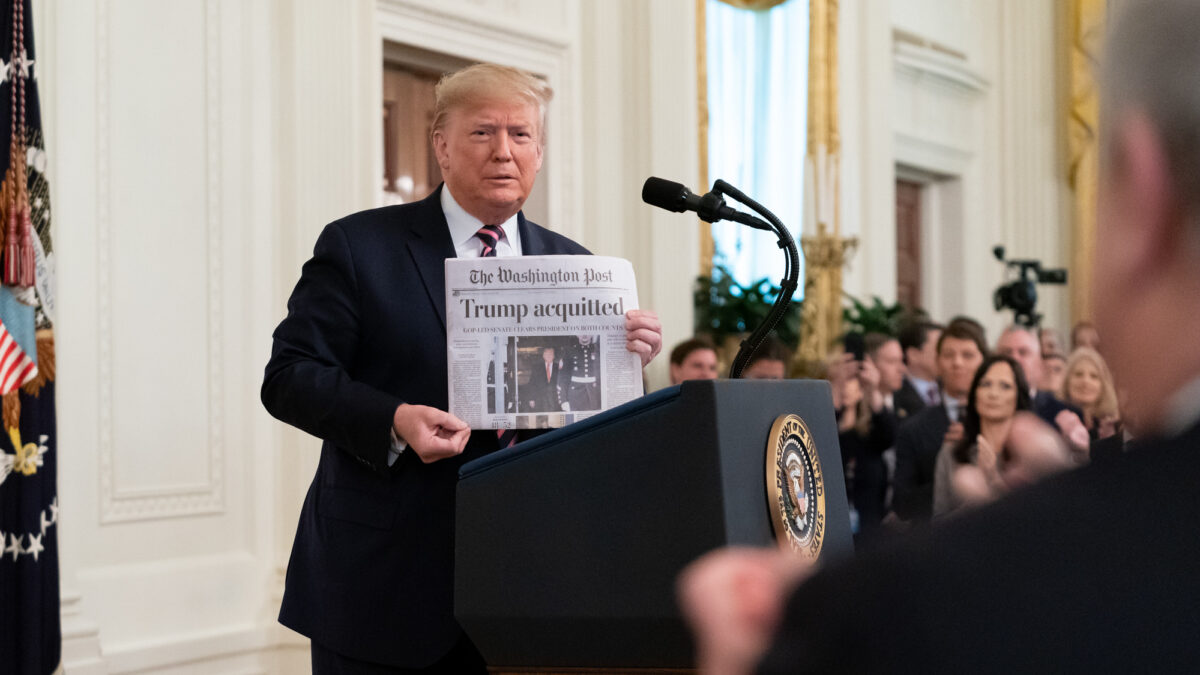
On Tuesday morning, the Trump administration issued a proposed rule regarding short-term health insurance plans. The action represents the second prong of the Trump administration’s strategy, outlined in last October’s executive order, to offer regulatory relief to insurance markets. The Department of Labor acted on the first prong, issuing a proposed rule expanding access to association health plans, in January.
As I noted in October, the Obama administration issued a rule in October 2016 designed to limit short-term plans. The Public Health Service Act specifically exempts “short-term, limited-duration insurance” from the definition of “individual health insurance coverage,” exempting such plans from all of Obamacare’s new, federally imposed regulatory regime (though they are regulated by states).
When it saw short-term plans were gaining popularity with the public—in part because such plans cost less than one-third the average premium paid for Obamacare-compliant coverage—the Obama administration 1) required new disclosures that short-term plans do not constitute Obamacare coverage, 2) shortened their duration to a maximum of 90 days, down from a duration of “less than 12 months” (i.e., 364 days), and 3) prohibited issuers from automatically renewing these policies.
The Trump Administration’s Proposal
The Trump administration’s proposed rule would revise the disclosure slightly (in part to reflect the repeal of Obamacare’s individual mandate, set to take effect in January 2019), and restore the prior definition of short-term coverage to “less than 12 months.”
The proposed rule also requests comment on the ways to facilitate streamlined renewal of short-term plans. As I noted in an article last year, limiting individuals’ ability to renew policies harmed people who develop illnesses while on short-term plans:
Jimmy Kimmel forgot to mention it, but prohibiting coverage renewals harms individuals with pre-existing conditions, because it forbids customers who develop a pre-existing condition while on short-term plans from continuing their coverage. In discouraging these short-term plans, the Obama administration preferred individuals going without coverage entirely over seeing anyone purchase a policy lacking the full panoply of ‘government-approved’ benefits.
The Trump administration can and should rescind this coercive rule and its perverse consequences immediately.
Effective Dates and Impact
The administration will take comment on the proposed rule for 60 days, and issue a final rule after reviewing those comments. The administration proposed having the new rules take effect 60 days after publication of that final rule. Administration officials on a call Tuesday morning suggested insurers could start selling the new policies in the late summer or fall of this year.
The administration estimates that the proposed rule would lead only about 100,000-200,000 individuals to switch from individual coverage to short-term plans, only about 10 percent of whom would have qualified for Obamacare insurance subsidies on exchanges. The administration also estimates the rule would raise spending on premium subsidies by $96-168 million annually. Because the individuals shifting to short-term coverage would be younger and healthier than average, they would slightly increase premiums, and thus premium subsidies, on the insurance exchanges.
However, these comparatively modest estimates on both the coverage and cost fronts suggest that short-term plans may have less of an impact than conservatives had hoped—or liberals have feared. Time will tell if the predictions prove an over-estimate or under-estimate; perhaps more definitive actions to allow for the guaranteed renewal of short-term coverage will increase their popularity.
What Should Be the Next Steps?
Now that it has proposed this rule, the administration should take regulatory action on another front, by stopping a movement in Idaho to offer non-compliant health plans. Last month, the state’s insurance department offered guidance to insurers about new coverage offerings. The new plans could:
- Impose limits on pre-existing conditions for individuals without continuous coverage;
- Limit benefits provided to $1 million annually;
- Not offer maternity care in all cases (although each carrier must sell one plan with maternity coverage); and
- Charge older individuals up to five times as much as younger individuals when calculating premium rates.
As a matter of policy, I support all these proposals. They would reform insurance markets, provide greater incentives to maintain coverage, and offer more affordable plans to help attract the younger, healthier individuals who have shunned many Obamacare exchanges.
But the Idaho guidance hints at one big problem. It instructs insurers selling the plans in question to disclose to consumers that “This policy is not fully compliant with federal health insurance requirements.”
Therefore, as a matter of law, I cannot support the Idaho effort, not because I support or want to sustain Obamacare—I don’t—but because I support and want to sustain the rule of law, which is more important than any single piece of legislation. Unfortunately in this instance, federal law supersedes state law, which means the federal law must prevail.
I wrote in January 2017 that the Trump administration had an obligation to enforce the individual mandate. Likewise here, the administration has an obligation to enforce the Obamacare statute, and either redirect Idaho’s efforts to bring them into compliance with the law—perhaps through a Section 1332 innovation waiver, although that waiver may not bring the state sufficient flexibility—or quash them. The administration has a constitutional obligation to “take care that the laws be faithfully executed,” and it should not follow the Obama administration’s example of picking and choosing which laws it wishes to enforce.
Because it likely takes a similar view as mine on the policy merits of Idaho’s proposal, the Trump administration has thus far offered no indication it will enforce the federal requirements that supersede Idaho’s. However, it can use the announcement of the short-term plans rule as the proverbial spoonful of sugar to make enforcement against Idaho’s proposal more palatable. Thanks to the administration’s action, insurers in all 50 states can soon offer the types of coverage Idaho describes, or other innovative plans—albeit for 364 or fewer days, rather than a full year. Idaho should use this olive branch from Washington to withdraw its proposal, and promote the federally approved short-term plans instead.
Better yet, Congress can and should repeal the regulations that represent the beating heart of Obamacare. They have a roadmap to do so, even with a slim Senate majority. Such action would allow Idaho, and 49 other states, to innovate to their heart’s content to provide more affordable coverage to their residents—an outcome consistent with the rule of law, and federalism, that conservatives could embrace whole-heartedly.
Mr. Jacobs is founder and CEO of Juniper Research Group, a policy consulting firm based in Washington. He is on Twitter: @chrisjacobsHC.









